Munich, This and That
This concludes my series about Munich, Geneva to follow (hope I will find the time, to be read ‘I won’t procrastinate for too long’).
Munich in 3 Days
Munich 2 – Deutsches Museum
Munich 3 – Dachau, ‘Arbeit Macht Frei’
Munich 4 – BMW Museum
Munich 5 – ‘Englischer Garten’
Munich 6 – The Place Where You Can Sleep from 7.50 Euro (9.4 USD)!
A black granite memorial to the White Rose Movement, a non-violent group in Nazi Germany, consisting of students from the University of Munich and their philosophy professor, that became known for an anonymous leaflet and graffiti campaign, lasting from June 1942 until February 1943. I knew the story (I saw a movie about the White Rose) and I have always found it extraordinary the courage they had in the middle of one of the most oppressive regimes the history has ever known. 
“Bikes can also be rented by the Call-A-Bike system, which is run by Deutsche Bahn. You need to call a number listed on the bikes from your mobile phone and register with the callabike.de website in order to use them. The service is convenient, as you just spot an available bike throughout the city and just leave it at your destination. However, this is not an economical alternative if you are planning many trips in a single day. In that case, it is better to get a day or multiday rental from one of the rental services located throughout central Munich.” (from Munich Wikitravel). I didn’t use them but it seems an interesting idea.
‘Designed & engineered in Bavaria’ on the frame of a bike; I thought that only Apple does this: ‘Designed by Apple in California’ on each of their products :). Still couldn’t find where the bike had been manufactured, I suppose that in China otherwise they would have had written ‘Designed, engineered & made in Bavaria’.
“Frauenkirche (full name “Dom zu Unserer Lieben Frau”) is a major landmark and dominates with its 99 meter high twin towers the skyline of the Bavarian capital. It was built between 1468 to 1494 by Jörg von Halsbach and today it serves as the cathedral of the Archdiocese of Munich and Freising and seat of its Archbishop. The cathedral can hold approximately 20,000 people, and Catholic Mass is held regularly. The interior of the cathedral, which is among the largest hall churches in southern Germany, consists of the nave and two side aisles. The arches were designed by Heinrich von Straubing. Much of the interior was destroyed during WWII. An attraction that survived is the Teufelsschritt, or Devil’s Footstep, at the entrance. This is a black mark resembling a footprint, which according to legend was where the devil stood when he curiously regarded and ridiculed the ‘windowless’ church that Halsbach had built.” (from Munich Wikitravel). 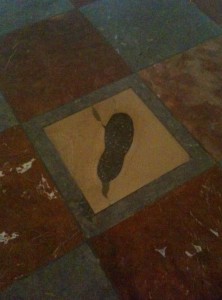
Out of 10 taxis, 9 are Mercedes (and this in BMW heartland!!!) and one Toyota Prius that proudly displays ‘ecotaxi, cleaner drives better’. I have been in hybrid Prius (not in Munich) and the discussion I had with the taxi drivers was along the line that the car paid for itself by the savings in fuel. I wonder why not most taxis are Prius (Warning: I have 5 shares in Toyota, used to own 10 but lost my patience and I sold the half for some $1 profit just to recover half of my money; my hapless adventures in stock investments here).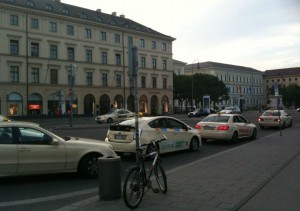
People taking photos of the world famous Glockenspiel in Marienplatz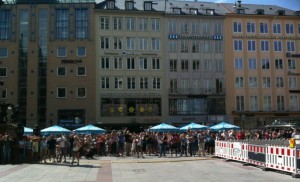
Asam Church (German: Asamkirche), very beautiful. It was built from 1733 to 1746 by the brothers Egid Quirin Asam and Cosmas Damian Asam as their private church but due to resistance of the citizens, the brothers were forced to make the church accessible to the public. Initially when I read the story I thought they were some rich foreign (their names don’t seem to be German) merchants. I was wrong, they were painters and sculptors and German.
I was in the tower of the Neues Rathaus in Marienplatz and I saw people in the opposite tower.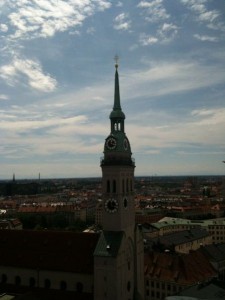
I couldn’t resists so I went to the St. Peter’s Church as well as I like to go up in towers in the cities I visit and here is the view of the other tower I had gone up to just 20 minutes before.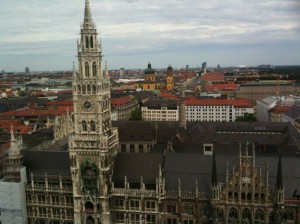
No idea why the locks are there, who put them and why.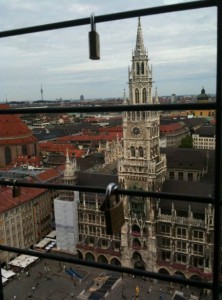
Otto von Bismarck’s statue near Deutsches Museum 
I found it strange, that he was depicted holding a sword, he was a prime minister after all not a general (I think I saw paintings of Saddam Hussein holding a Kalashnikov). Perhaps the sculpture is in reference to one of his speeches when he said: The great questions of the time will not be resolved by speeches and majority decisions—that was the great mistake of 1848 and 1849—but by iron and blood. (that is, military power).
However, in the 1880s Bismarck’s social insurance programs were the first in the world and became the model for other countries and the basis of the modern welfare state. While he was a chancellor old age pensions, accident insurance, medical care and unemployment insurance were introduced.
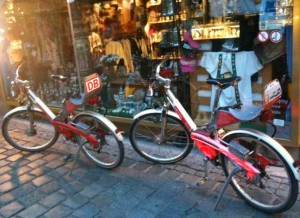
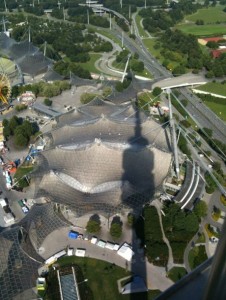
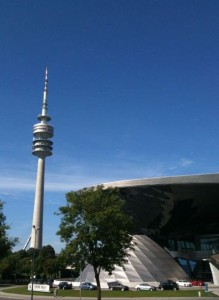
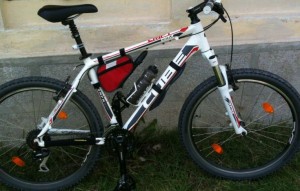
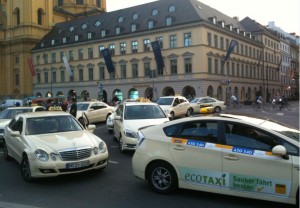
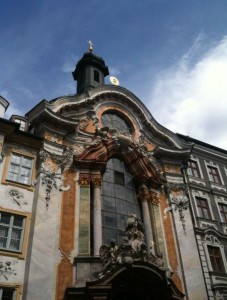
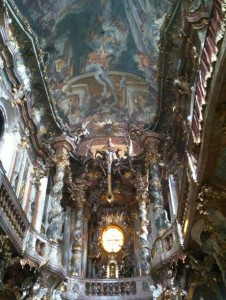
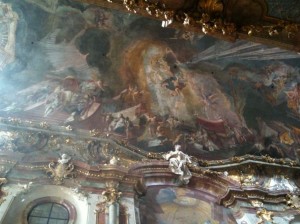
links arent working for me
@tri
I just checked and they work